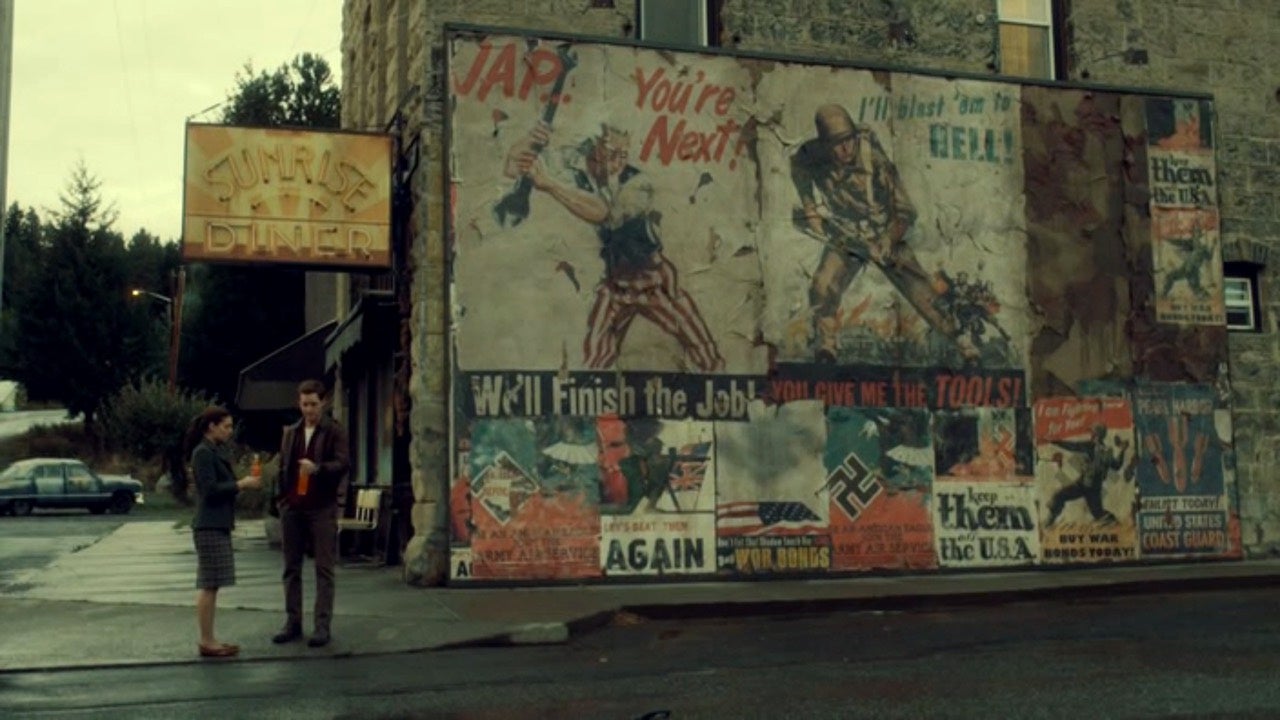
New York, 1962. A young man walks the evening streets, passing bars, clubs, liquor stores….and a giant neon swastika. Across the country in San Francisco, citizens take morning aikido classes while the image of a rising sun adorns shop fronts, billboards and traffic signs all over the city. This is the head-spinning world of Philip K. Dick’s The Man in the High Castle, where the allies lost the second world war and America has been partitioned between the forces of the German Reich in the east and the Japanese Empire in the west, with only a narrow, desolate neutral zone separating the two. After years of trying to get a TV adaptation of Dick’s classic alt-history novel off the ground (first with the BBC and then the SyFy channel), showrunner Frank Spotnitz and executive producer Ridley Scott (no stranger to adapting Dick’s work) have finally found a home for the project on Amazon’s instant video service, where this episode is airing as part of their latest pilot season. Based solely on this first episode, we here at Geekzine hope that the show does well enough to get picked up for a full series, because it’s frankly excellent.
Following the story of Joe (Luke Kleintank) and Juliana (Alexa Davalos), two young people who get mixed up in an underground resistance movement, The Man in the High Castle ambitiously blends elements of period drama, spy thriller and (just a little) science fiction. As our heroes journey to Canon City, Colorado to deliver a mysterious film reel to an unknown contact, we get a disturbing overview of what life is like in this alternative America. An uneasy truth has existed between east and west in the years since the war ended, but as Adolf Hitler’s health continues to fail, and his belligerent lieutenants vie for ascendancy, the very real spectre of nuclear war begins to loom large. Various factions work in secret to either prolong the truce between Germany and Japan, or root out those who would seek to undermine the military might of their respective imperial masters. In the first camp is Cary-Hiroyuki Tagawa’s Japanese trade minister, whose troubling readings of the I Ching convince him to risk his life in order to extend the world’s fragile peace, and in the second is Rufus Sewell’s diabolical SS officer, a man of ruthless calculation and unchecked brutality whose eye is now firmly fixed on Canon City. There’s only so much time in this pilot episode to flesh out so many story threads, but all of them feel like genuinely compelling parts of a larger puzzle, one steeped in the atmosphere of paranoia so characteristic of Dick’s work.

There’s solid work all round by a cast made up of unknowns and character actors (Sewell is probably the closest thing to a big name), and the episode crafts an intriguing premise whilst leaving enough mystery to make you want more. It’s in the realm of production design, though, that The Man in the High Castle really shines. To create a believable vision of Dick’s fictional 1960s America is an massive feat on a non-HBO television budget, and despite some ropey CGI and the drawbacks of an oppressively muted colour palette, Spotnitz and his team have pulled it off in impressively understated style. But the grandeur of the big picture never overwhelms the power of the episode’s little touches: New York’s elevated railway being dubbed the “U-Bahn” and adorned with swastikas; the bitter incomprehension and resignation of the older generation who fought and lost the war; and the horrifying moment by a country road when Joe discovers what the strange grey snow falling from the sky really is. All these moments contribute to a fully realised world at once radically different and yet eerily similar to our own, and it’s that jarring resonance, although with the enticing possibilities hinted at by the show’s plot, that makes this pilot episode such a compelling watch. We can but hope it gets picked up for a full series.
The pilot episode of The Man in the High Castle is currently airing on Amazon’s Instant Video service.
